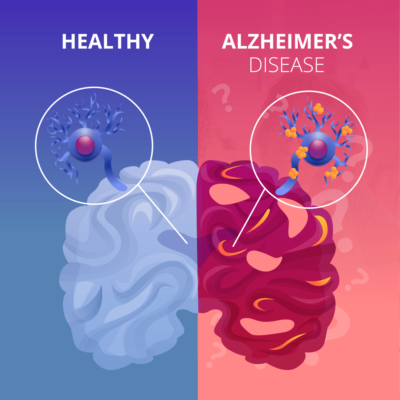Summary of article α-Sheet secondary structure in amyloid β-peptide drives aggregation and toxicity in Alzheimer’s disease. Dylan Shea, Cheng-Chieh Hsu, Timothy M Bi, Natasha Paranjapye, Matthew Carter Childers, Joshua Cochran, Colson P Tomberlin, Libo Wang, Daniel Paris, Jeffrey Zonderman, Gabriele Varani, Christopher D Link, Mike Mullan, Valerie Daggett Proc Natl Acad Sci U S A2019 Apr 30;116(18):8895-8900. doi: 10.1073/pnas.1820585116. Epub 2019 Apr 19. PMID: 31004062 PMCID: PMC6500163 DOI: 10.1073/pnas.1820585116 https://pubmed.ncbi.nlm.nih.gov/31004062/
Alzheimer’s disease is a progressive neurodegenerative illness characterized by loss of memory and cognitive functions. The cause of the disease is the steady deposit on the brain of plaques formed by the amyloid proteins. There is currently no treatment against Alzheimer’s disease.
The Beta-amyloid protein is a protein involved in Alzheimer disease which, the study proposes, adopts a never observed before secondary structure called alpha-sheet, which, it was hypothesized, correlates with neurotoxicity and cognitive damage.
This study focused on developing synthetic alpha-sheet proteins that can specifically bind to the beta-amyloid alpha-sheets, inhibiting their aggregation, toxicity, and the formation of plaques. The researchers developed an assay that can detect the presence of Beta-amyloid alpha-sheets and tested it in vitro on a mouse disease model.

